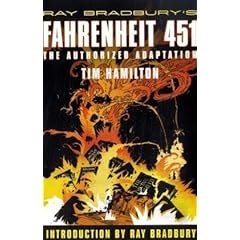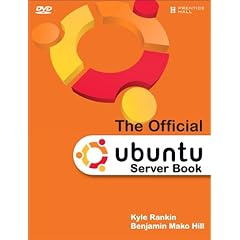I recently edited down a chapter from The Official Ubuntu Book for posting on Linux Journal’s website. Enjoy!
Month: August 2009
O’Reilly has posted two sample recipes from VMware Cookbook, that Ryan Troy and I wrote. Please enjoy!
Sample 1: Ethernet Traffic Shaping
Sample 2: Monitoring CPU Usage
Over the last year or so I have had the privilege of reading several atypical educational books that use graphic art to help teach difficult concepts or illustrate the action. This is another wonderful entry in the “Manga Guide to…” series that I have been reviewing.
The Manga Guide to Calculus follows the actions of a young newspaper reporter, Noriko, who wants to cover the big stories, to be a hard-hitting reporter who uncovers and reveals hidden facts about world affairs, the economy, and politics. She is saddened to discover that she has been assigned to work a small post in a small area where she is unlikely to find stories bigger than the opening of a local amusement park or the improving reputation of a local watermelon grower.
However, her time is not wasted. The bureau chief is a lover of mathematics, and specifically calculus. Noriko is shocked to discover that calculus can help her become a better reporter by assisting her to discover trends in data that might otherwise have been overlooked.
This story line makes the discussion of very complex and sometimes difficult to grasp mathematical concepts much easier by framing the discussion in ways I have never seen. In my experience, a typical calculus class will start with mechanics like how to compute a derivative or somewhat esoteric sounding concepts like lines tangent to curves without giving a clear background as to why these things might be meaningful or useful. That usually comes much later, after a large number of students have been weeded out because of disinterest or an unwillingness to learn difficult concepts without knowing why they might be important.
What this book does better than any calculus book I have seen is give a context to the processes and concepts. The story line is enjoyable, but more importantly it serves the function of enabling a reader to understand how the mathematics help solve problems or answer questions that are useful and relatable. That in itself is a great and useful accomplishment and makes the book worthy of a recommendation.
The book covers a large number of concepts. As a result, none are covered in exhaustive depth. I would not consider this a primary text or useful for learning calculus alone, but rather as an accompaniment to a course, useful for review or assistance in understanding concepts as they are learned.
Some of the topics covered are using functions to approximate data, such as fluctations or trends in prices, calculating relative error and calculating the derivative of constant, linear, quadratic, composite, inverse and other functions. Norika learns how to use different techniques for differentiation while discovering the importance and usefulness of knowing the maxima and minima for a given formula. Not long after these and other foundational aspects are learned, Norika finds out about the fundamental theorem of calculus and learns to integrate using supply and demand curves and later trigonometric functions. Finally, she discovers Taylor Expansion, distributions, and partial differentiation, especially as applied to economics.
The book includes exercises in each section with solutions in the back of the book. Again, there aren’t enough practice problems for this to be useful as a primary teaching text, but what is there is useful for confirming that the concept just discussed is clearly understood and would be helpful as a review.
I would have preferred to see more examples of calculus in use in other sciences, like physics, but this is a short book that is intended to be an overview of the topic and not an extensive or exhaustive presentation. It is also fair to note that the Manga Guide to Physics does use some calculus in it, although not much. These are books aimed at people finishing high school or just starting at the university and I think they hit their target well, confining themselves to discussions within well chosen boundaries to make sure that the intentionally and necessarily narrower set of concepts may be discussed clearly and completely enough for good understanding.
I had the privilege of helping out with one chapter in The Official Ubuntu Server Book–I didn’t do enough to earn an author’s credit or get a mention on the cover or anything, but Kyle Rankin was kind enough to mention me in the Acknowledgements on page xxiii. Thanks for the chance to contribute, Kyle and Mako!
Check out the Amazon page for the book. If you run Ubuntu on your server or are considering doing so, you are likely to find the book both interesting and useful.
EDIT: It’s a great read, and would be without my small contribution.
I just installed Rockbox, an open source firmware for music players, on my Cowon iAudio M5.
I’ve owned this portable music player for a couple of years, originally purchasing it because it is wonderfully compatible with Linux and mounts as a USB Mass Storage device and plays nearly every common audio filetype, including all the ones I had/have on my hard drive.
I liked the original firmware that Cowon provided and never had a problem with it. However, me being me, I had some free time and needed a project, so I downloaded Rockbox and installed it today. I expected this would be a detailed and complicated process, as installing custom firmware often is (eg. like the first time I installed dd-wrt on my Linksys wrt54g v2). It wasn’t. The whole process took ten minutes, and that includes the time I took to read the installation instructions. Wow!
Then, I turned the player on and began to play. Immediately I began to ask myself why I hadn’t done this ages ago. Rockbox has so many more features and configurability, plus (more importantly) it works well. I’m impressed!
This project has been both fun and enjoyable, but my life has become much busier lately than it used to be. Rather than cancel or end the Ubuntu Community Interviews series, I have found someone who is both able and excited to take it over. Just as it was once passed to me, I am now passing the baton to Joe Barker (Joeb454 on the forums), who will do a wonderful job with it in its new home on his blog.
I first read about this graphic novel adaptation of Ray Bradbury’s classic book about a month ago. I was immediately intrigued. The original book is one of my all time favorites and I wanted to see if a graphic adaptation could do it justice. In short: it does.

Tim Hamilton and the folks at Hill and Wang, with the blessing of Ray Bradbury, who writes the introduction to the book, have produces a beautiful and well crafted retelling of the classic story that is both true to the original and able to stand on its own.
For those unfamiliar with the story, Guy Montag is a fireman, only in his world firemen don’t put out fires, they start them. Books are banned and are the target of the firemen’s activity. One day, Montag meets a person who intrigues him with her joie de vivre. He has never met anyone so alive and vibrant and he wonders why. He also begins to look at his own life and realizes he is not happy, that there is something missing. The rest of the tale revolves around his struggle to find meaning in a sterile, inoffensive world where everything is brought down to a common denominator of homogeneous agreeability. I won’t spoil your enjoyment by revealing more than that.
Those of us who know the story well will note a few details are missing from this adaptation. Like when a movie is made, in this graphic novel it appears that some details of the written story were sacrificed to enable a cleaner telling in the new medium. Again, to avoid spoilers I won’t mention here what has been left out, but I will say that the overall structure and message remain intact and the story does not suffer from the loss. Instead, those who move from this as an initial taste will find the book richer and even more enjoyable.
What about the artwork? That is the main point here, isn’t it? I loved it. The artist chose a wonderful style to convey the emotion and action that is reminiscent of the minimalism of 1940s propaganda art, with a limited color palate on each page and just enough detail to convey the main point. Please don’t read that to mean the art is simple or simplistic. On the contrary, Hamilton does an amazing job of choosing which details are most important and distilling the scenes down to only those which further the plot, emotion, or scene. Extraneous information is nowhere to be seen. That can only be by design and due to the disciplined intent of the artist. Detail that is useful is everywhere, and throughout the book the art complements the text beautifully while taking nothing away from it. That is an achievement.
I confess, I am a reader. I always have several books being read concurrently, stashed here and there for convenience. Fahrenheit 451 is a book I have read several times and which I love. I admit there was some trepidation when I heard about it being adapted into a new form. In this case, none was needed. I am not only pleased by the quality of the graphic novelization, but happy to recommend it. In fact, this makes me want to request a few other classic novels to be adapted, not as replacements, but as introductions to whet the appetites of the curious in the hopes of satisfying their initial curiosity about the works as well as convince some who might not otherwise to delve in and read the originals. Now, I wonder where I put the publisher’s email address?

